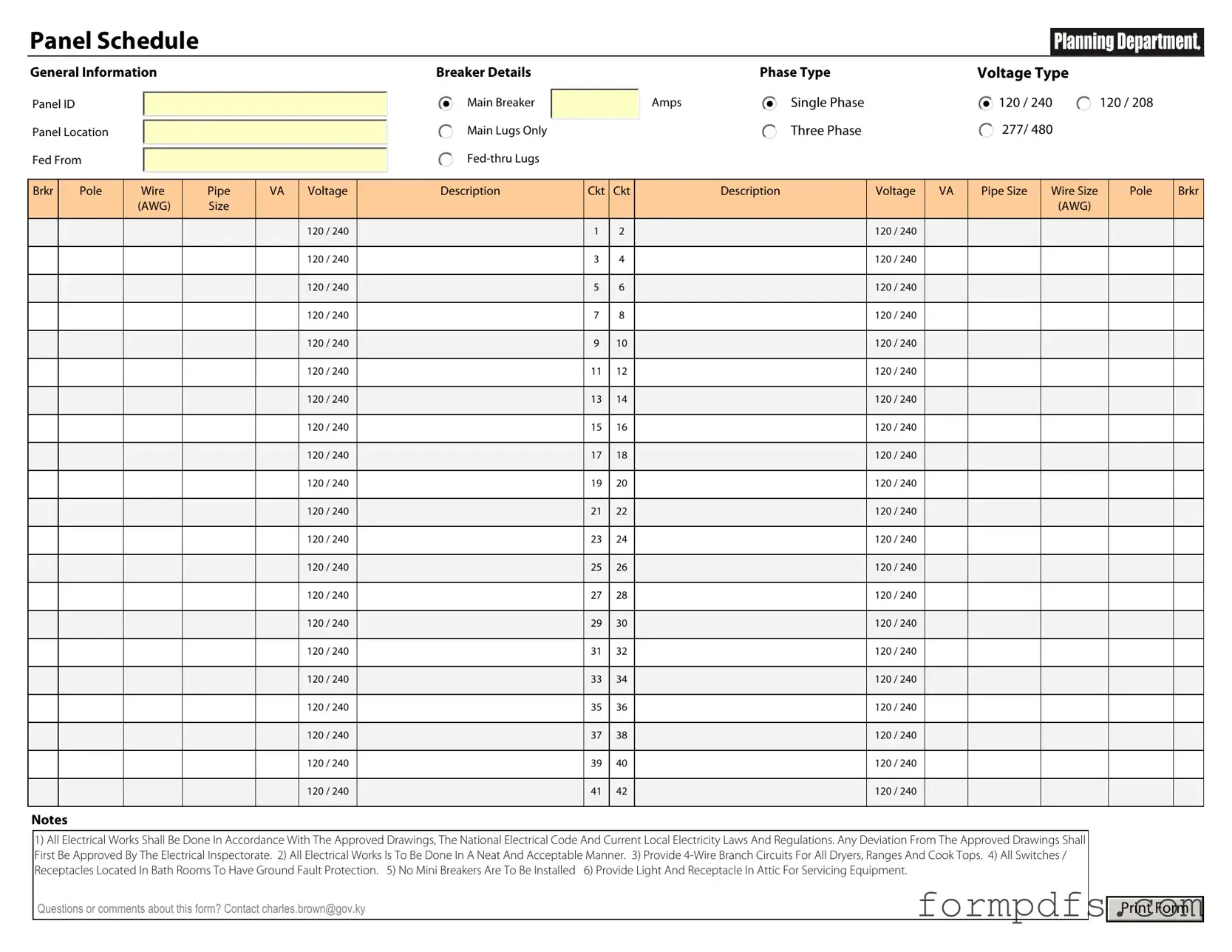What is an Electrical Panel Schedule form?
An Electrical Panel Schedule form is a document that outlines the distribution of electrical circuits within a panel. It provides information on each circuit's load, breaker size, and the specific areas or equipment each circuit serves. This form is essential for ensuring that electrical systems are safe, efficient, and compliant with local codes.
Why is an Electrical Panel Schedule important?
This schedule is crucial for several reasons. It helps electricians and engineers understand the layout of the electrical system, facilitating troubleshooting and maintenance. It also aids in load calculations to prevent overloading circuits, which can lead to electrical fires or equipment failure. Additionally, it is often required by building codes and insurance companies.
Who should complete the Electrical Panel Schedule form?
The form should be completed by qualified professionals, such as licensed electricians or electrical engineers. They possess the necessary expertise to accurately assess the electrical load and ensure compliance with relevant codes and standards.
What information is typically included in the Electrical Panel Schedule?
A typical Electrical Panel Schedule includes the following information: circuit number, description of the load, breaker size, ampere rating, and any relevant notes about the circuit. Some schedules may also include details about the location of the panel and the overall capacity of the electrical system.
How often should the Electrical Panel Schedule be updated?
The Electrical Panel Schedule should be updated whenever there are changes to the electrical system. This includes adding new circuits, changing breaker sizes, or modifying the load on existing circuits. Regular updates ensure that the document remains accurate and useful for maintenance and safety checks.
What are the consequences of not having an updated Electrical Panel Schedule?
Failing to maintain an updated Electrical Panel Schedule can lead to serious safety hazards, including circuit overloads and electrical fires. Additionally, it may result in non-compliance with local codes, which can lead to fines or complications during inspections. Accurate documentation is essential for the safe operation of electrical systems.
Can I create my own Electrical Panel Schedule?
While it is possible to create your own Electrical Panel Schedule, it is recommended to consult with a licensed electrician or electrical engineer. They can provide guidance on the necessary details and ensure that the schedule meets all applicable codes and standards. An improperly completed schedule may lead to safety issues.
Where can I find a template for the Electrical Panel Schedule form?
Templates for Electrical Panel Schedules can often be found online through electrical engineering resources, construction websites, or industry associations. It is important to choose a template that complies with local regulations and includes all necessary fields for accurate documentation.
